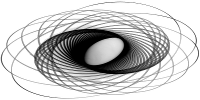W. Li, R. R. Martin, F. C. Langbein. Molds for Meshes: Computing Smooth Parting Lines and Undercut Removal. IEEE Transactions on Automation Science, 6(3):423-432, 2009. [DOI:10.1109/TASE.2009.2021324] [PDF]
We consider the problem of computing a parting line for a mold for a complex mesh model, given a parting direction, and the related problem of removing small undercuts, either pre-existing, or resulting from the parting line. Existing parting line algorithms are unsuitable for use with complex meshes: the faceted nature of such models leads to a parting line which zig-zags or wanders across the surface undesirably. Our method computes a smooth parting line which runs through a band of triangles whose normals are approximately perpendicular to the parting direction. We generate a skeleton of this triangle band to find its distinct topological cycles, and to decompose it into simple pieces. After selecting paths making a good cycle, we generate a final smooth parting line by iteratively improving the geometry of this cycle. Compliance in the physical material, and/or modifications to eliminate minor undercuts ensure that such a parting line is practically useful.
![]() This work is licensed under a Creative Commons Attribution-NonCommercial-ShareAlike 4.0 International License.
This work is licensed under a Creative Commons Attribution-NonCommercial-ShareAlike 4.0 International License.

